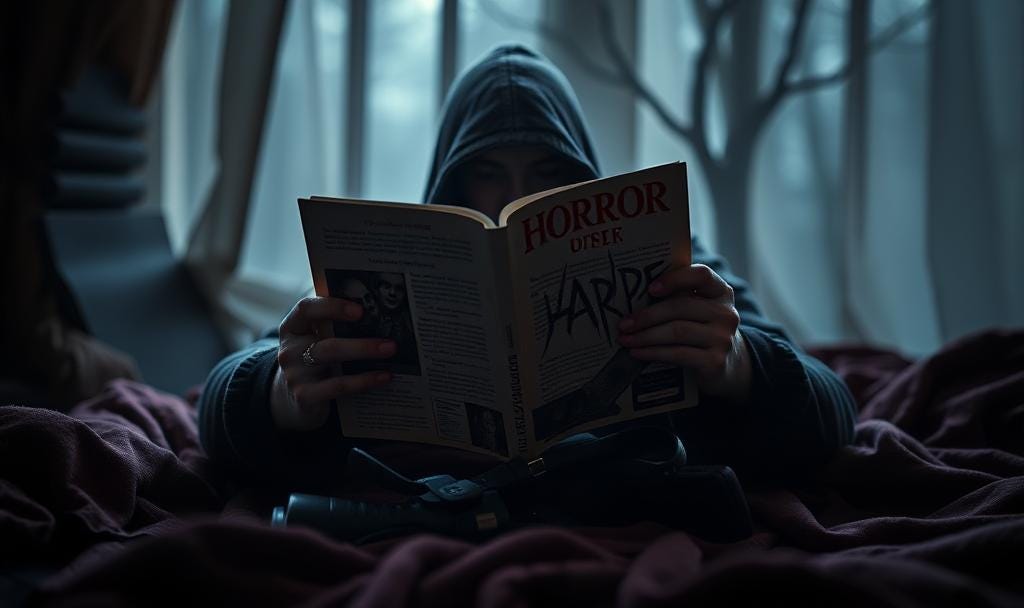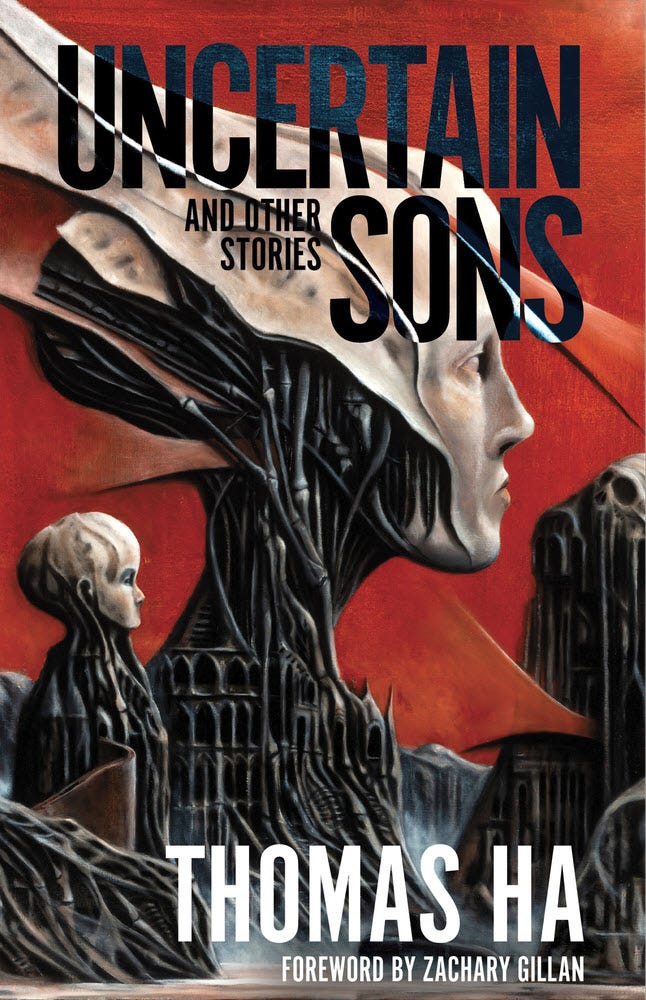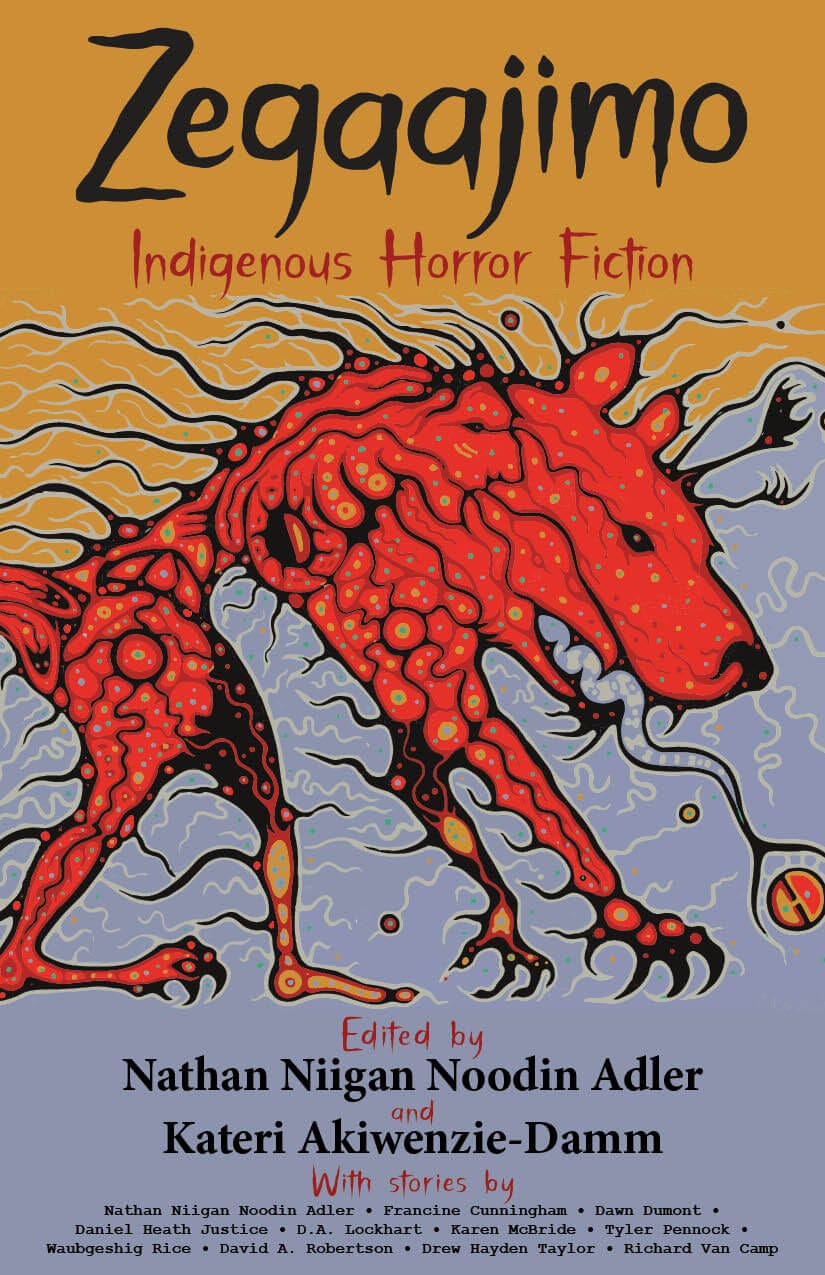Reading Weird Fiction: A Review of Two New Collections
Uncertain Sons and Other Stories by Thomas Ha and Zegaajimo, Indigenous Horror Fiction
Reading a book in the horror genre these days may seem counterintuitive, given the amount of actual atrocities occurring in various parts of the world. However, the type of horror contained in the two short fiction collections that follow are not of the slasher type of horror. Nor do they involve vampires and that sort of traditional monster we may think of when we hear about a horror novel.
In fact, a recent post at BookNet Canada shared these facts:
“Fiction / Horror has seen steady growth since 2020, and it was up 16% in 2024 over 2023. Sales of the subject continue to grow in 2025, up 17%. The 2024 BISAC codes included some new Horror subcategories that we’ve been keeping an eye on. So far this year, we’ve seen a rise in sales of Occult & Supernatural, Slasher, and Collections & Anthologies Horror titles but a decline in Cosmic & Eldritch and Psychological Horror titles.”1
The two books in this review, Uncertain Sons and Other Stories by Thomas Ha and the anthology Zegaajimo, Indigenous Horror Fiction are distributed over the supernatural, cosmic, and psychological subcategories. Let’s take a closer look at each of them.
Uncertain Sons and Other Stories by Thomas Ha
Thomas Ha, an American writer of speculative fiction whose work has been featured in numerous magazines, presents his debut collection, Uncertain Sons and Other Stories. It is published by Undertow Publications, an independent Canadian publisher renowned for its focus on weird fiction and horror (See my review of their excellent Northern Nights anthology). The stories within Uncertain Sons showcase a diverse range of settings, encompassing familiar environments, extraterrestrial landscapes, and locations that defy easy categorization. Despite this variety, a unifying element connects them all: the narratives centre on ordinary individuals navigating the challenges of a present-day apocalyptic or post-apocalyptic world, or exploring the realities of life on a habitable planet. (As in “Sweetbaby”). The horrors can be creatures, as in the titular story, which is vaguely reminiscent of Stephen King’s “The Mist”.
The first story, “Window Boy” is sci-fi/horror about a post-apocalyptic world (one assumes) where people live far underground, while giant Grackles and other horrors control the surface world. Those too poor to be homed must fight for their lives on the surface. “Alabama Circus Punk” is set in a world where artificially intelligent beings live amongst the biological ones and can “purchase” human-looking bodies to “transfer” to (for lack of a better term, it’s similar to starting a document on one computer, then working on it on another one.). The “son-body” has not been syncing with the father-body and the mother-body (and the house) and has been acting strangely, including the chewing of some data cables. This necessitates calling the ubiquitous cable guy, who is a biological, to the slight disgust of the father-body: “I would have to be sure to book a scrubbing service to remove the detritus after he was gone.” The cable guy employs a device unknown to the father-body and apparently uses it to shut down the house (and the bodies in it) and then proceeds to empty it. It causes the father-body, now alone in an empty house, to reflect on the transitoriness of life and material things. Is there a lesson in there for us?
As you can see, not all the stories in Uncertain Sons contain horror, but are more like speculative fiction, or “weird fiction” which is fast becoming my go-to genre these days. I can certainly recommend this ambitious collection to anyone remotely interested in speculative fiction, weird fiction, or imaginative short fiction in general. The concepts are fresh, with a tip of the hat to Ray Bradbury for their imaginative concepts and the overall execution of the storytelling.
https://undertowpublications.com/shop/uncertain-sons
Zegaajimo: Indigenous Horror Fiction
I must admit that when I saw the cover, I assumed that I was going to be reading about the horrors contained within traditional Indigenous stories. However, the stories in Zegaajimo which often (but not always) draw on the traditional ones, are set in the present or future, in familiar and unfamiliar places and surroundings, much like Uncertain Sons. There are eleven stories in this anthology, which includes tales from such well-known Indigenous writers as D. A. Lockhart, Waubgeshig Rice, and Drew Hayden Taylor.
“A Season for Everything” is the story of a woman out hunting for a caribou. Her Moshum’s (Grandfather) voice in her head reminding her to perform a clean kill, leave nothing wasted, the land will provide. She sights a caribou, a pregnant one that she knows in her heart she shouldn’t shoot and her Moshum says:
Don’t, he says to me. Not this one, she is with young. She is not what she seems.
But her hunger makes her act rashly, and her initial shot only wings the doe. Now she must track it so she can kill it and sing the death song, giving thanks. She thinks to herself:
“I shudder as I think of the stories he would whisper to me over the fire. Of wild women who roamed the woods, of men thrust out of their communities centuries past who still walk the trails today wishing for a way back home, of creatures who can shapeshift at will of monsters who would eat the flesh off your bones without even stopping to kill you first. Of how they remember faces. He taught me respect and protocol. Protections against their gaze.”
She finds the doe and prepares to slit her throat, but cannot bring herself to do it. By not finishing the kill, by disrespecting the life she should finish off, she will indeed find out that her Moshum’s words will come true: She (the doe) is not what she seems.
In “Mouthless” aliens turn humans into pumpkins that they use for food, but our protagonist who becomes infected at the start of the story has a built-in defence, thanks to having had a rare form of COVID-19. The description of the transformation from animal to vegetable is truly horrifying.
D.A. Lockhart has always been one of my favourite authors, and he doesn’t disappoint with his entry in this anthology, “The River Gives What the River Gives”. In this case, the Detroit River in which Bill, Douglas, and his niece Nicole are in a boat, using a huge magnet to find valuable junk at the bottom of the river, anything they can turn into money. All illegal, of course, so they do this under the cover of darkness. Suddenly, their line goes taut and there’s definitely something heavy on the other end. Hauling it aboard,
The strange mass they had just hauled aboard from the shadowlands of the cold river deeply unsettled him. It took a moment before the scent of old, charred wood found him The lingering reek of long extinguished fires bled into the air from the new arrival. Douglas sensed a coldness seeping out of the object, a chill that followed the edges of the scent. He could glean little about the mass other than its scent and coldness.
What, exactly have they brought up from the depths? Nicole messages her friend Carmine, who responds back with “don’t touch it”. But Bill will not heed the warning and unleashes an ancient destructive force, well known to the Indigenous inhabitants of the area.
Ever afraid of being buried alive in a coffin? Then “Interment” is a must-read.
“The Keeper of the Bones” by Daniel Heath Justice is an excellent example of a mix of Indigenous/colonist struggles with weird, speculative fiction. Not easy to describe, it must be read to fully grasp all the intricacies of the storytelling.
I must say that Kegedonce Press (Indigenous owned and operated) has done a noteworthy work in the production of this book. The cover artwork is striking, and there is a wonderful texture to the cover, with raised elements (such as the title) creating a great tactile feel to the book. It makes a great argument for print vs e-book! The inside is no less remarkable, as the paper used is quality stock, and the cover artwork is scattered throughout the interior. Edited by Nathan Niigan Noodin Adler and Kateri Akiwenzie-Damm, this is an outstanding anthology, one which will make you look deeper into the works of the featured writers. The stories in both of these volumes complement each other superbly.
https://kegedonce.com/books/zegaajimo-indigenous-horror-fiction/
About the Reviewer
James M. Fisher is the Editor-in-Chief of The Seaboard Review of Books. He lives in Miramichi New Brunswick with his wife Diane, their Tabby cat Eddie and Buster the Border Collie. James works as an MRI Technologist at the Miramichi Hospital.
https://www.booknetcanada.ca/blog/research/2025/8/11/subjects-on-the-move-in-the-canadian-market






